Pallet Inverter: How Can Auto Parts Plants Improve Ergonomics During Pallet Flips?
Handling heavy loads in an auto parts plant is a daily reality. Workers are constantly moving, lifting, and restacking components, often from one pallet to another. This manual process is slow, inefficient, and, most importantly, dangerous. The repetitive strain of bending and lifting can lead to serious back injuries, resulting in worker compensation claims, lost productivity, and a decline in team morale. You see your team working hard, but you also see the physical toll it takes, and you worry about both their well-being and your bottom line. What if there was a way to completely eliminate this high-risk task, boost your operational speed, and protect your most valuable asset—your people?
A pallet inverter improves ergonomics in auto parts plants by completely automating the strenuous and risky task of manual pallet flipping. This machine securely clamps a full pallet load, rotates it 180 degrees, and allows an operator to safely and quickly exchange the bottom pallet. This removes the need for any manual lifting, bending, or restacking of individual parts, which directly eliminates the primary causes of musculoskeletal injuries associated with this process and significantly increases throughput.
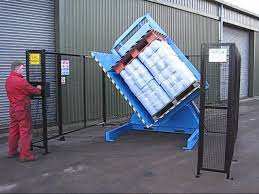
This solution might sound straightforward, but its impact on a factory floor is profound. I've seen it firsthand in my years in the industry. It's not just about buying a new piece of equipment. It's about fundamentally rethinking a workflow that has been a source of pain and inefficiency for too long. For a leader like you, who is focused on both operational excellence and employee welfare, understanding the specific ways a pallet inverter transforms your process is crucial. Let's dig deeper into how this technology can be a game-changer for your plant.
You see a team of workers manually transferring boxes from a wooden pallet to a plastic one. On the surface, it looks like work is getting done. But I know you see the bigger picture. You see the slowdowns, the occasional dropped box, and the strain on your employees' backs. The direct cost of labor is easy to calculate, but the true, hidden costs of this manual process are what really eat into your profits and productivity. These are the expenses that don't always show up on a balance sheet until it's too late—a serious injury, a major product recall due to damage, or a critical bottleneck that halts your entire production line.
The hidden costs of manual pallet handling go far beyond wages. They include expenses from workplace injuries, damaged products, operational inefficiencies, and reduced employee morale. These costs quietly accumulate, creating a significant financial drain and operational risk for any heavy industry, including auto parts manufacturing and steel production. Overlooking these factors means underestimating the true value and ROI of an automated solution.
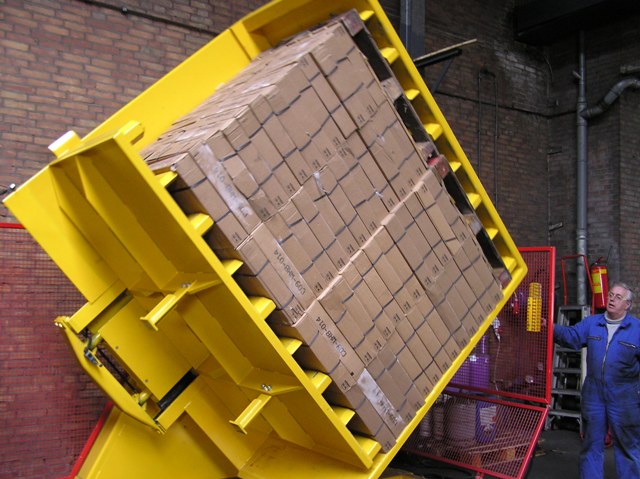
When I started my own factory, I had to watch every single dollar. I learned quickly that the most obvious expense is rarely the most dangerous one. Manual handling is a perfect example. You might save money upfront by not investing in equipment, but the long-term costs can be staggering. Let's break down these hidden costs, because acknowledging them is the first step toward solving them.
The High Price of Workplace Injuries
Ergonomics isn't just a buzzword; it's a critical financial and operational issue. When an employee manually unloads and reloads a pallet, they might perform hundreds of awkward lifts and twists in a single shift. This is a recipe for musculoskeletal disorders (MSDs), especially back injuries. The cost of a single serious injury is immense. First, there are the direct costs: medical bills and workers' compensation insurance premiums, which can skyrocket after a claim. Then come the indirect costs, which are often four to ten times greater. These include the cost of hiring and training a replacement worker, lost productivity during the transition, and the administrative time spent managing the claim. The impact on team morale can also be severe, as other employees worry about their own safety.
Product Damage and Quality Control Issues
People get tired. When workers are manually handling heavy or delicate auto parts for hours, the risk of dropping or mishandling them increases dramatically. A single damaged component might be inexpensive, but what if it's a high-value item? What if the damage isn't noticed until it reaches your customer? The cost then balloons to include recalls, reputational damage, and lost future business. A pallet inverter handles the entire load as a single, secure block. It doesn't get tired or careless. It clamps the product with consistent, controlled pressure and performs a smooth rotation, virtually eliminating the risk of handling-related damage.
Operational Bottlenecks and Inefficiency
Manual pallet exchange is a slow, labor-intensive process that can easily become a bottleneck in your production line. Think about the time it takes for two or three employees to break down a pallet and restack it. This can take 15-20 minutes or more. A pallet inverter can do the same job in under 60 seconds with a single operator. This dramatic increase in speed has a ripple effect across your entire operation. It means trucks are loaded and unloaded faster, production lines are supplied more quickly, and your overall capacity utilization improves. In an industry where timing is everything, eliminating these small, cumulative delays is key to achieving the kind of efficiency goals you're aiming for.
Here’s a simple comparison:
| Factor | Manual Pallet Handling | Pallet Inverter |
|---|---|---|
| Labor Required | 2-3 Employees | 1 Operator |
| Time per Pallet | 15-20 Minutes | ~1 Minute |
| Injury Risk | High (Bending, Lifting, Twisting) | Extremely Low |
| Product Damage Risk | Moderate to High | Very Low |
| Process Consistency | Low (Depends on workers) | High (Machine-controlled) |
| Operational Impact | Potential Bottleneck | Smooth, Continuous Flow |
Looking at this table, it becomes clear that manual handling isn't a saving, but a recurring expense.
How does a pallet inverter directly reduce the risk of workplace injuries?
In any plant, you can see the areas where physical risk is highest. Pallet handling is always on that list. I remember watching workers in the early days of my career, straining to lift heavy parts from the bottom of a pallet, their bodies twisted in awkward positions. It was a common sight, and so were the subsequent complaints of back pain. The problem is that the human body is simply not designed for the repetitive, heavy lifting required to manually transfer a full pallet's worth of goods. You know the risks are real, and you're constantly looking for ways to engineer them out of your process.
A pallet inverter directly reduces workplace injury risk by eliminating the very actions that cause harm: manual lifting, bending, and twisting under load. The machine takes on the entire physical burden. It uses a hydraulic or electric system to securely clamp the product load, lift it, and rotate it smoothly. The operator's role changes from manual laborer to a skilled controller, managing the process from a safe distance without any physical strain. This automation fundamentally removes the ergonomic hazards from the pallet exchange task.
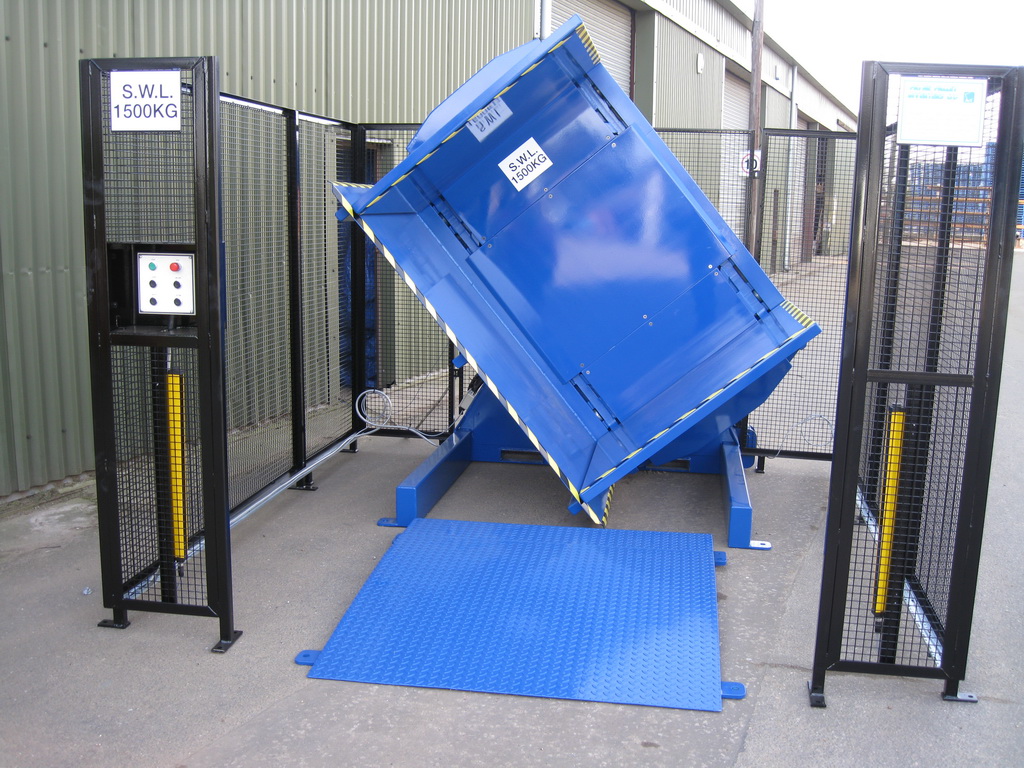
The beauty of a well-designed machine is its simplicity in solving a complex problem. The ergonomic problem of pallet flipping involves multiple risk factors. A pallet inverter addresses each one with mechanical precision. It's not just a marginal improvement; it's a complete removal of the hazard. Let's explore the specific mechanics of how this happens.
Eliminating Awkward Postures and Repetitive Strain
The primary cause of MSDs is the combination of force, repetition, and awkward posture. Manually destacking a pallet hits all three.
- Awkward Postures: Workers must constantly bend at the waist to reach items at the bottom of the pallet and reach overhead for items at the top. They also twist their spines to move items from one pallet to the next.
- Repetitive Strain: This action is repeated dozens or even hundreds of times per pallet. Over a full shift, this adds up to thousands of stressful movements.
- Force: The auto parts themselves can be heavy, and lifting them from a compromised posture multiplies the effective force on the spine.
A pallet inverter replaces all of these dangerous movements with a single, automated cycle. The operator simply places the pallet in the machine with a forklift. The machine's clamping platforms secure the load. The rotation is handled by the machine's motor. The pallet exchange happens at a comfortable, ergonomic height. The worker never has to manually lift a single box.
Designing for Operator Safety
Modern pallet inverters are built with safety as a top priority, which aligns perfectly with the goals of any forward-thinking plant manager. Standard safety features often include:
- Safety Fencing: Physical barriers prevent personnel from accidentally entering the machine's operational area during a cycle.
- Light Curtains: These create an invisible safety barrier. If an operator breaks the beam while the machine is active, the cycle immediately stops.
- Pressure Controls: The clamping system uses regulated pressure. It's strong enough to hold the load securely without crushing the product, and safety valves prevent over-pressurization.
- Emergency Stops: E-stops are placed at convenient locations for immediate shutdown if needed.
Here is a breakdown of common injuries from manual handling and how a pallet inverter prevents them:
| Common Manual Handling Injury | Cause | How a Pallet Inverter Prevents It |
|---|---|---|
| Lumbar Strain (Lower Back) | Lifting heavy items while bent over or twisting. | Eliminates all manual lifting of product. |
| Herniated Discs | Sudden, forceful movements or long-term spinal stress. | Automates the entire lifting and turning process. |
| Shoulder Injuries (Rotator Cuff) | Repetitive overhead reaching and lifting. | The machine does all the work. Pallet is exchanged at waist level. |
| Repetitive Strain Injuries (RSI) | Performing the same stressful motions thousands of times. | Replaces a long, repetitive task with a single, quick machine cycle. |
| Foot/Hand Crush Injuries | Dropped items or unstable pallet loads collapsing. | Secures the entire load before movement, preventing drops. |
By investing in a pallet inverter, you are essentially investing in a safer work environment. It sends a clear message to your employees that their well-being is a priority.
Beyond ergonomics, what are the operational efficiency gains from using a pallet inverter?
Improving worker safety is a huge win, and often, it's enough to justify an investment. But as a business owner, you need to look at the full picture. You're constantly asking, "How can we do this faster, better, and at a lower cost?" You have ambitious goals to increase capacity utilization to 95% and reduce overall costs. A machine that only solves one problem might not be enough. You need solutions that provide benefits across the board, from safety to speed to quality control.
Beyond its crucial ergonomic benefits, a pallet inverter delivers significant operational efficiency gains by drastically cutting down process time, reducing product damage, and optimizing labor allocation. Instead of multiple workers spending 15-20 minutes on a single pallet, one operator can complete the task in about a minute. This massive increase in speed eliminates production bottlenecks, ensures a smoother flow of materials to and from your production lines, and frees up valuable employees for more skilled tasks.
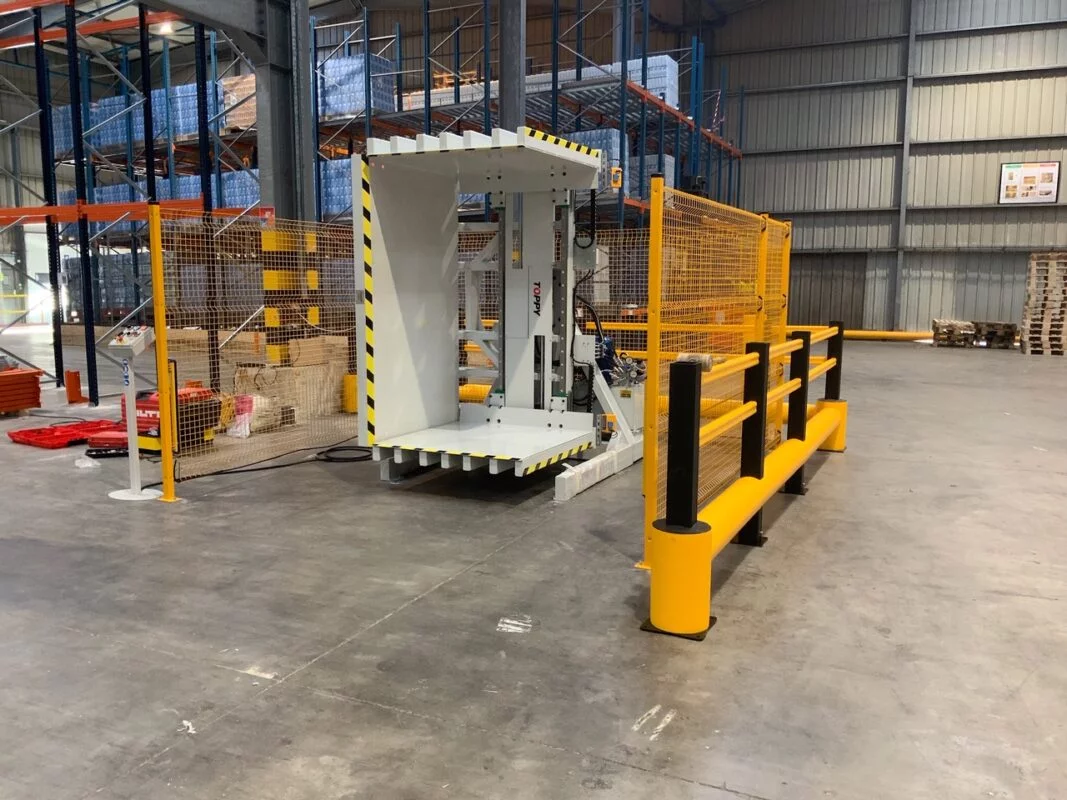
When I work with clients, we always map out the entire process. We look at the time, the people, and the resources involved in a single task. When we analyze pallet handling, the potential for improvement is always massive. It's not just about doing the same job faster; it's about transforming the workflow to unlock new levels of productivity. Let's look at the concrete operational gains.
Drastic Reduction in Cycle Time
The most immediate and measurable gain is speed. As we've discussed, the time difference is stark. A manual process that ties up two workers for 20 minutes is a huge drain. That's 40 minutes of labor time. A pallet inverter operated by one person for one minute is just one minute of labor time. This isn't a 10% or 20% improvement; it's a 97.5% reduction in labor time per pallet. When you multiply that by the number of pallets you handle each day, the savings are enormous. This speed allows you to load and unload trucks faster, reduce vehicle waiting times, and keep your production lines fed without interruption. This directly contributes to your goal of higher capacity utilization because you are minimizing downtime and waiting periods.
Protecting Your Product and Your Bottom Line
Every time a product is handled manually, there's a risk of damage. In the auto parts industry, components can be heavy, oddly shaped, or cosmetically sensitive. A drop, scrape, or dent can render a part useless. The cost of scrap and rework directly impacts your profitability. A pallet inverter handles the entire load as one solid unit. The clamping mechanism is designed to be gentle but firm, securing the load without causing damage. By minimizing manual touches, you are also minimizing the opportunity for human error and product damage. This leads to lower scrap rates, fewer quality control issues, and a more consistent, reliable output, which helps in your goal to lower overall operating costs.
Better Labor and Space Utilization
Your skilled workers are a valuable resource. Tying them up with a low-skill, high-risk task like manually restacking pallets is not an efficient use of their talent. By automating this process, you free up those employees to be reassigned to more complex, value-added tasks like machine operation, quality inspection, or maintenance. This improves overall productivity and can also increase job satisfaction. Furthermore, pallet inverters can help optimize warehouse space. Some models, for instance, can be used to square up messy or shifted loads, allowing them to be stored more densely and safely in racking systems.
Here's how the efficiency gains stack up:
| Performance Metric | Manual Pallet Handling | With Pallet Inverter | Impact on Business Goals |
|---|---|---|---|
| Cycle Time | 15-20 minutes | < 1 minute | Increases throughput, helps achieve 95% capacity utilization. |
| Labor Allocation | 2-3 workers per pallet | 1 operator | Reduces labor costs, allows for better allocation of skilled staff. |
| Product Damage Rate | Higher due to drops/mishandling | Near zero | Reduces scrap costs, contributes to 8% operating cost reduction goal. |
| Workflow | Prone to bottlenecks | Smooth, predictable, continuous | Improves production scheduling and overall plant efficiency. |
| Integration | Standalone manual process | Can be integrated into automated lines (conveyors, wrappers) | Supports digital transformation and factory automation goals. |
This isn't just about a single machine. It's about optimizing a critical point in your logistics chain to support your broader strategic objectives.
My Insights: It's Not Just About the Machine, It's About the Right Partnership
I've spent my entire career in this industry, first as an engineer on the factory floor, then building my own company, SHJLPACK. I’ve been on both sides of the table. I've been the one responsible for making a production line run smoothly, and I've been the one providing the equipment to make it happen. I understand the pressure you face, Javier. You're not just buying a machine; you're making a strategic investment and you need to be certain it will deliver.
The technical specifications of a pallet inverter are important, but they don't tell the whole story. I've learned that the most successful projects come from a true partnership. A real partner doesn't just sell you a piece of steel. They take the time to understand your specific challenges—your aging equipment, your need for digital integration, your strict cost controls. They work with you to find a solution that fits perfectly into your operation and helps you achieve your long-term goals.
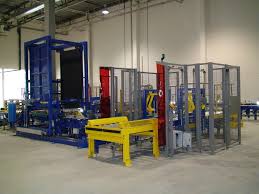
When you look for a supplier, you should be looking for a partner who can provide more than just a machine. You need someone who offers:
- Deep Process Knowledge: Can they analyze your workflow and recommend the right type of inverter? Do they understand how it will integrate with your existing conveyors, forklifts, and even your MES system?
- Full-Lifecycle Support: The partnership shouldn't end when the machine is delivered. It should include support through installation, commissioning, and operator training. More importantly, what about long-term support? You need a partner who can provide reliable maintenance advice and quick access to spare parts to ensure you meet that 95% uptime goal.
- Future-Focused Advice: Your goals include digital transformation. A good partner should be able to discuss how their equipment can fit into a connected factory. Can sensors be added for predictive maintenance? Can the machine communicate with your central control system? They should be a resource for you, helping you future-proof your investment.
The journey to financial independence and building a successful factory has taught me one thing above all: success is built on strong relationships and trust. I am passionate about sharing my knowledge because I am grateful for what this industry has given me. I believe in helping others, like you, find the right solutions that not only solve a problem but also propel your business forward. When you choose a partner, you're choosing someone to share your challenges and celebrate your successes with. Make sure you choose one who is as invested in your outcome as you are.
Conclusion
A pallet inverter is a powerful investment to enhance ergonomics, safety, and efficiency. It transforms a risky manual task into a fast, automated process, directly supporting your operational goals.


